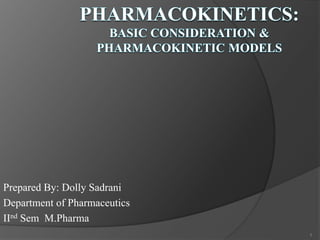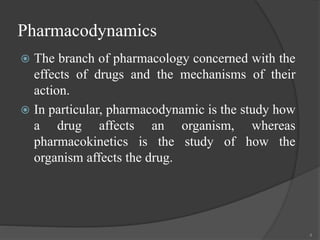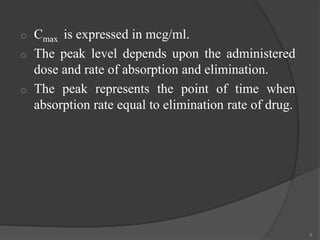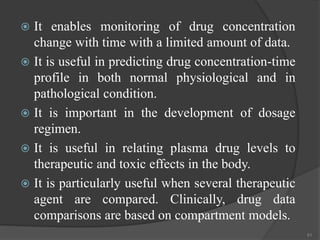This document provides an overview of pharmacokinetics and pharmacodynamics, including definitions, parameters, kinetics, and models related to drug absorption, distribution, metabolism, and excretion. It discusses various pharmacokinetic parameters such as plasma concentration-time profiles, areas under the curve, and the significance of minimum effective and maximum safe concentrations. Additionally, it outlines different kinetic processes (zero-order, first-order, mixed-order) and approaches for pharmacokinetic modeling to aid in the clinical management and evaluation of drug therapies.










































































